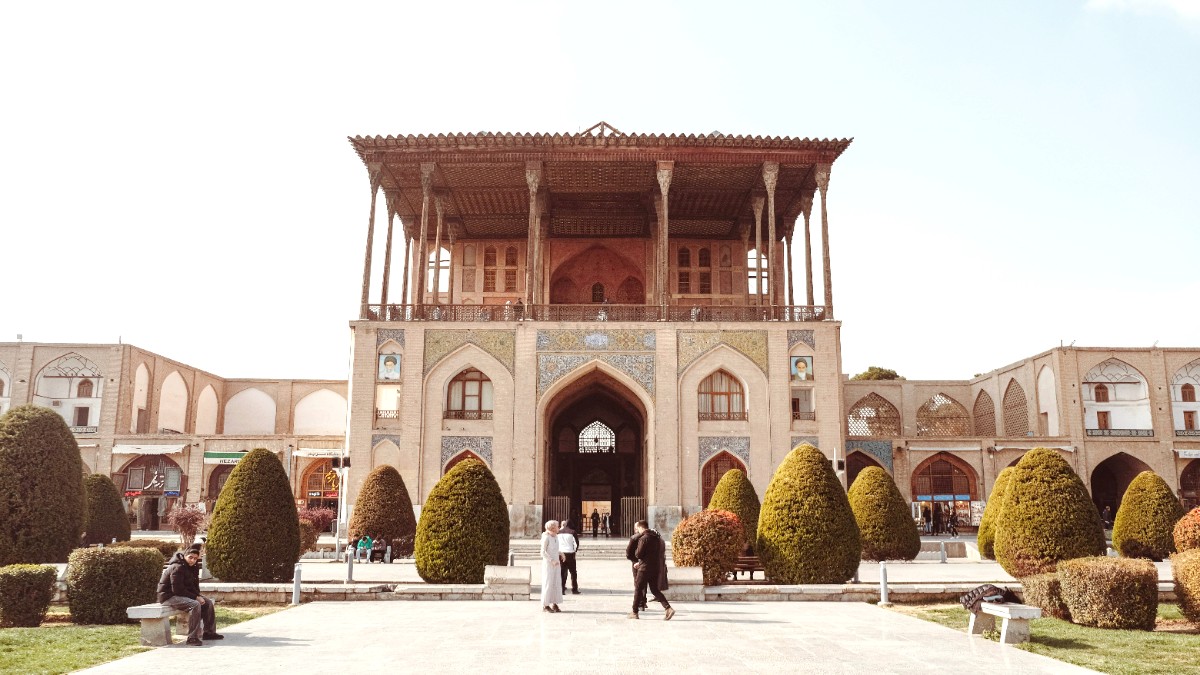
Central Iran, Iran
Spring (March-May): Enjoy mild to warm, pleasant temperatures. Average highs range from 15-25°C (59-77°F). Little precipitation. This period is suitable for exploring.
Autumn (September-November): Find mild and pleasant weather, similar to spring. Average highs are between 18-28°C (64-82°F). Precipitation stays low.
Summer (June-August): Experience hot and very dry conditions. Average highs hover around 30-40°C (86-104°F), sometimes exceeding 40°C (104°F). Humidity remains very low, and rain is almost non-existent. The sun shines intensely.
Winter (December-February): Expect cold temperatures. Average highs reach 5-12°C (41-54°F). Nights can drop below freezing. Some light snow or rain occurs, but the season is generally dry.
Spring (Mar-May), Autumn (Sep-Nov)
Ideal weather, city atmosphere.
Higher prices, more visitors at attractions.
Late Feb/Early Mar, Late Nov/Early Dec
Milder temperatures, fewer crowds, better deals.
Weather unpredictable, some days colder or hotter.
Summer (Jun-Aug), Winter (Dec-Feb)
Lowest prices, intimate experiences at sites.
Extreme heat in summer, cold in winter, shorter daylight.
Esfahan does not experience monsoons or hurricanes. Extreme summer temperatures are a significant consideration for visitors. Sun protection, ample water, and planning outdoor activities for early mornings or late afternoons are useful strategies during these months.
Early mornings and late afternoons in Spring or Autumn offer the best light for capturing stunning architectural details and landscapes, often with fewer crowds. Visit in Spring, especially April and May, to see gardens in full bloom. Autumn and Spring are best for desert trips.
Best in Spring & Autumn.
Early morning/late afternoon in Spring/Autumn.
Spring (April/May) for full bloom.
Autumn and Spring avoid extreme heat/cold.
Summer midday, winter for warmth.
Rules can change, so verify information with an Iranian embassy or consulate before your trip. Being well-informed prevents travel disruptions.
Iran offers several visa options depending on your nationality and travel plans. Choosing the right one streamlines your entry.
Gathering all necessary paperwork before applying speeds up the process.
Generally, no special permits are needed for standard tourist activities in Esfahan.
Cash is king, and knowing the difference between Rials and Tomans saves confusion. Strategic financial planning leads to a smoother trip.
Official currency is Iranian Rial (IRR). Toman is commonly used for prices (1 Toman = 10 Rials). Always clarify if a price is in Rial or Toman. Rates for the Rial are highly volatile. International credit/debit cards are not accepted. Bring sufficient cash (USD or Euro).
Daily costs range from $25 - $50 USD. This style focuses on affordability and local experiences.
Hostel dorms or basic guesthouses ($10-20).
Street food, local eateries, self-catering ($10-15).
Daily costs fall between $50 - $100 USD. This offers a balance of comfort and value.
Mid-range hotel or traditional guesthouse ($30-60).
Taxis, occasional ride-sharing, public transport ($5-10).
Daily costs exceed $100 USD. This budget allows for premium experiences and comfort.
Boutique or luxury traditional hotel ($70+).
Private drivers, frequent taxis ($15+).
| Category | Accommodation (per night) | Meals (per person) |
|---|---|---|
| Budget | Hostel Dorm: $10-20 | Street Food: $1-3 |
| Mid-range | Mid-range Hotel/Traditional House: $40-80 | Local Eatery: $5-10 |
| Luxury | Luxury/Boutique Hotel: $80-200+ | Fine Dining: $25-50+ |
Iran, and Esfahan specifically, is generally a safe place for tourists.
None for entry unless from a yellow fever endemic area.
Routine vaccinations, Hepatitis A/B, Typhoid, Rabies (if active outdoors).
Consult a travel doctor 4-6 weeks before departure.
Prevention is simpler than treatment.
Diarrhea/Food Poisoning: Drink Bottled water. Avoid uncooked street food. Carry Anti-diarrhea medication.
Dehydration/Heatstroke: A concern in summer. Drink plenty of Bottled water. Stay in shade. Wear light clothing. Electrolyte packets are recommended.
Sunburn: Use high-SPF Sunscreen. Wear a Wide-brimmed hat and Sunglasses.
Esfahan has several public and private hospitals offering good care. Private options often have better English-speaking staff.
Widely available and well-stocked with common medications. Look for a green cross sign.
Many doctors speak some English. Your hotel can offer recommendations for minor ailments.
Iran, and Esfahan specifically, is generally very safe for tourists with low rates of violent crime. People are often friendly and helpful. However, awareness is always recommended.
Travel insurance is a condition for visa application for many nationalities. Select a policy specifically covering Iran.
Confirm explicit coverage for Iran; many standard policies exclude it due to sanctions. Ensure it covers medical emergencies, evacuation, and trip cancellation.
Research providers that specifically state coverage for Iran, such as World Nomads or SafetyWing. Read the fine print carefully.
Police: 110, Ambulance: 115, Fire: 125. Keep your country's embassy or consulate details in Tehran readily available.